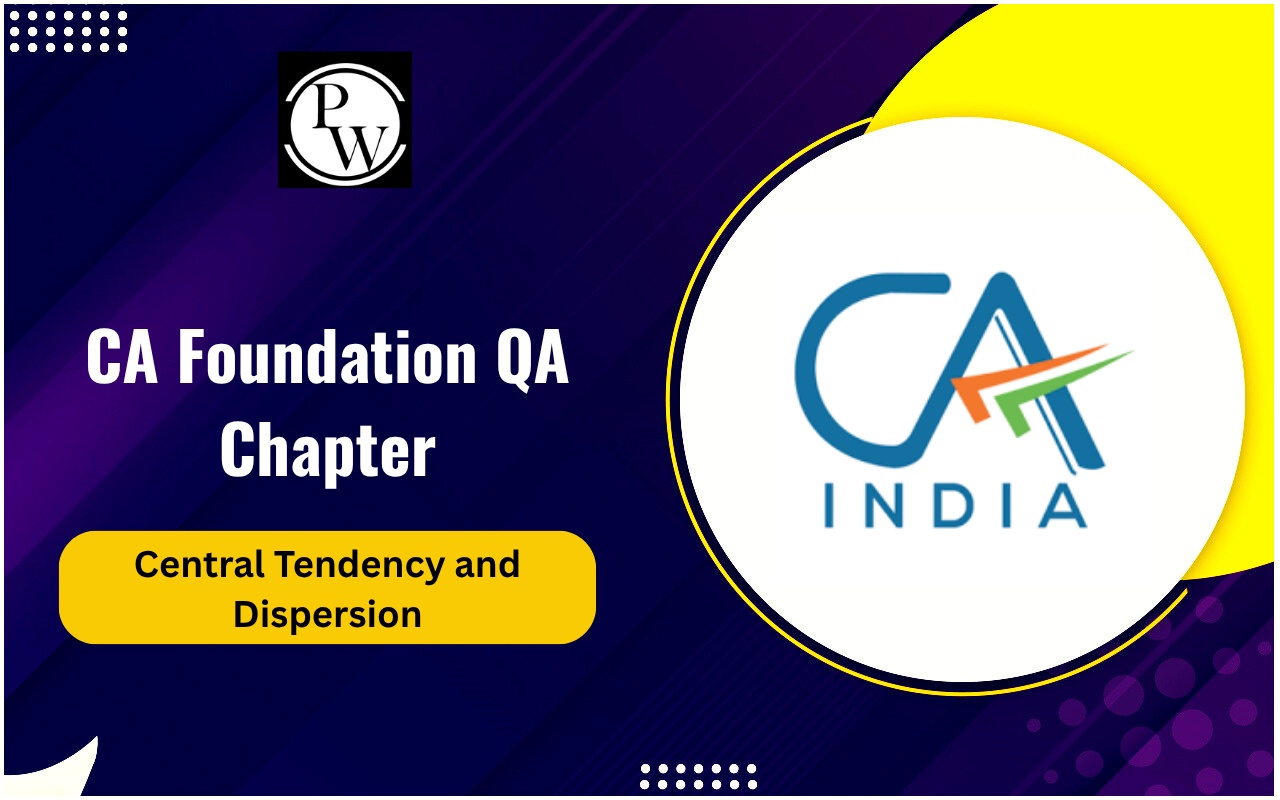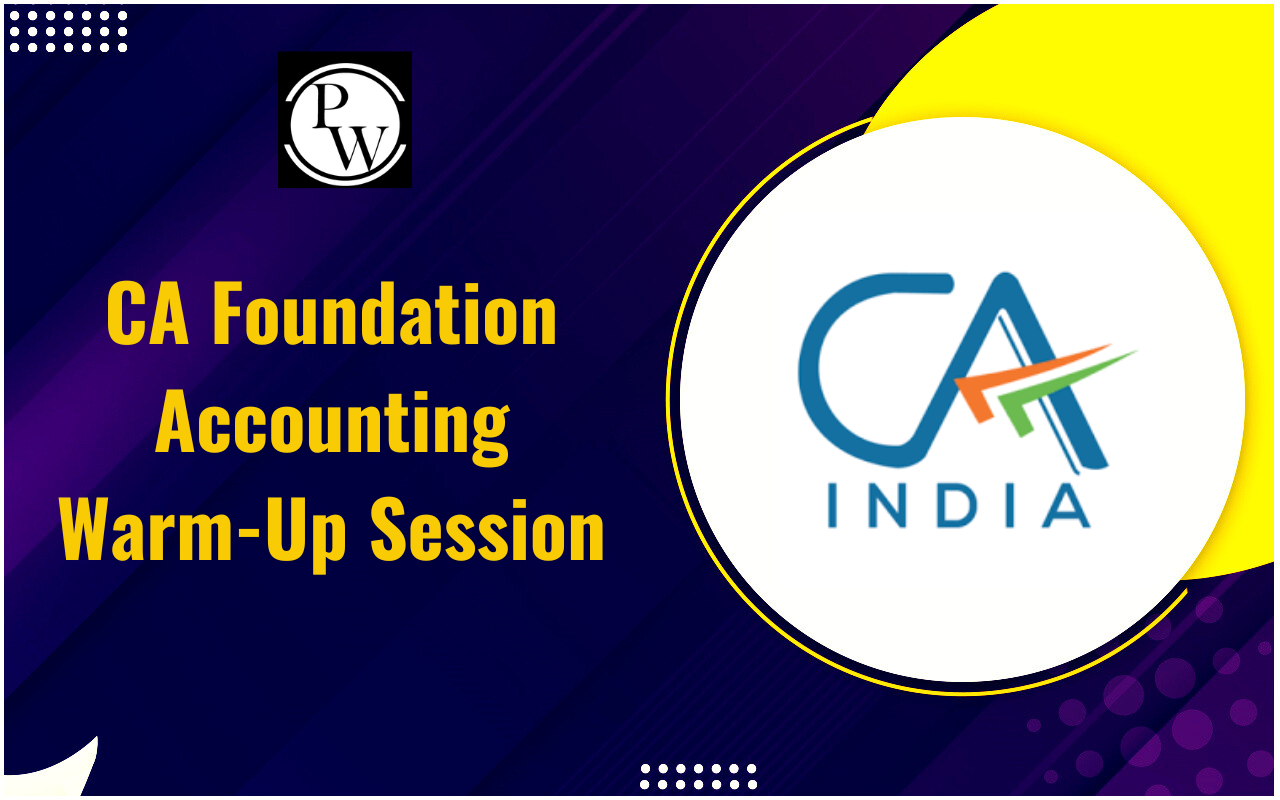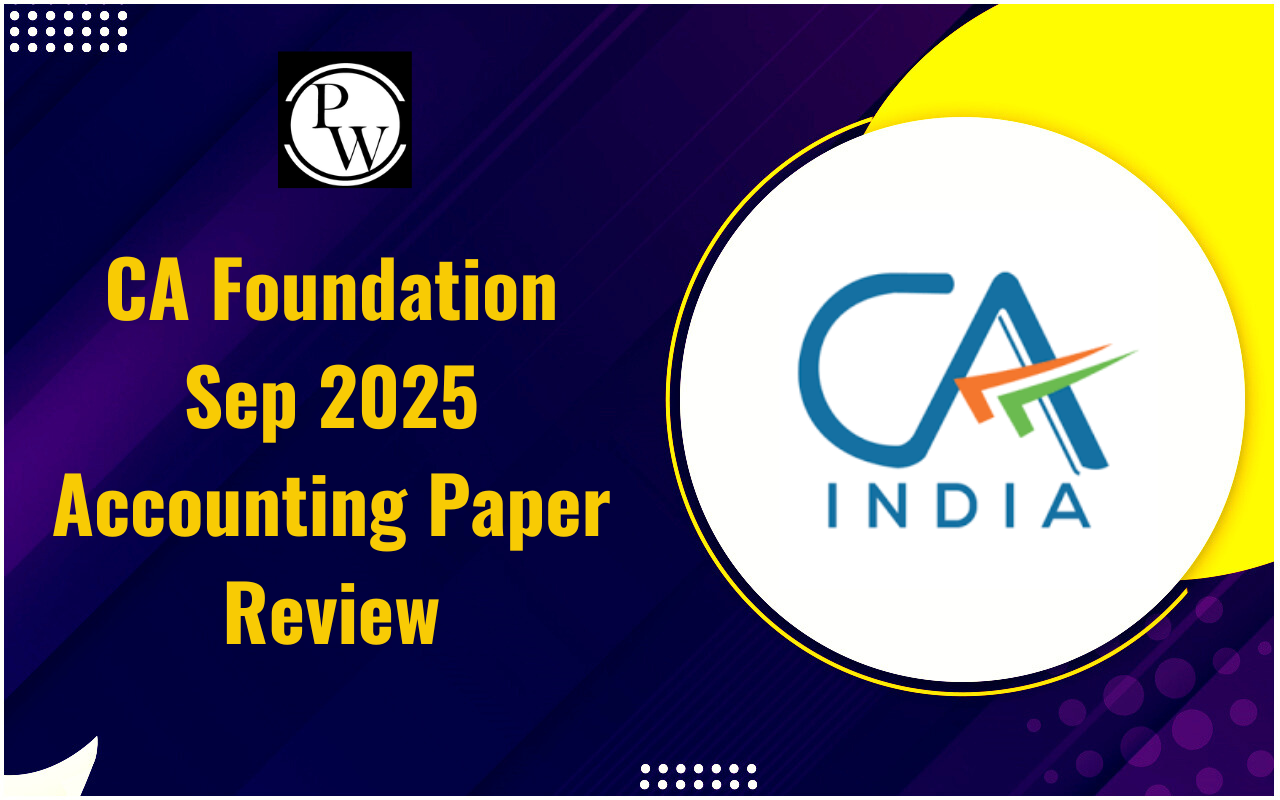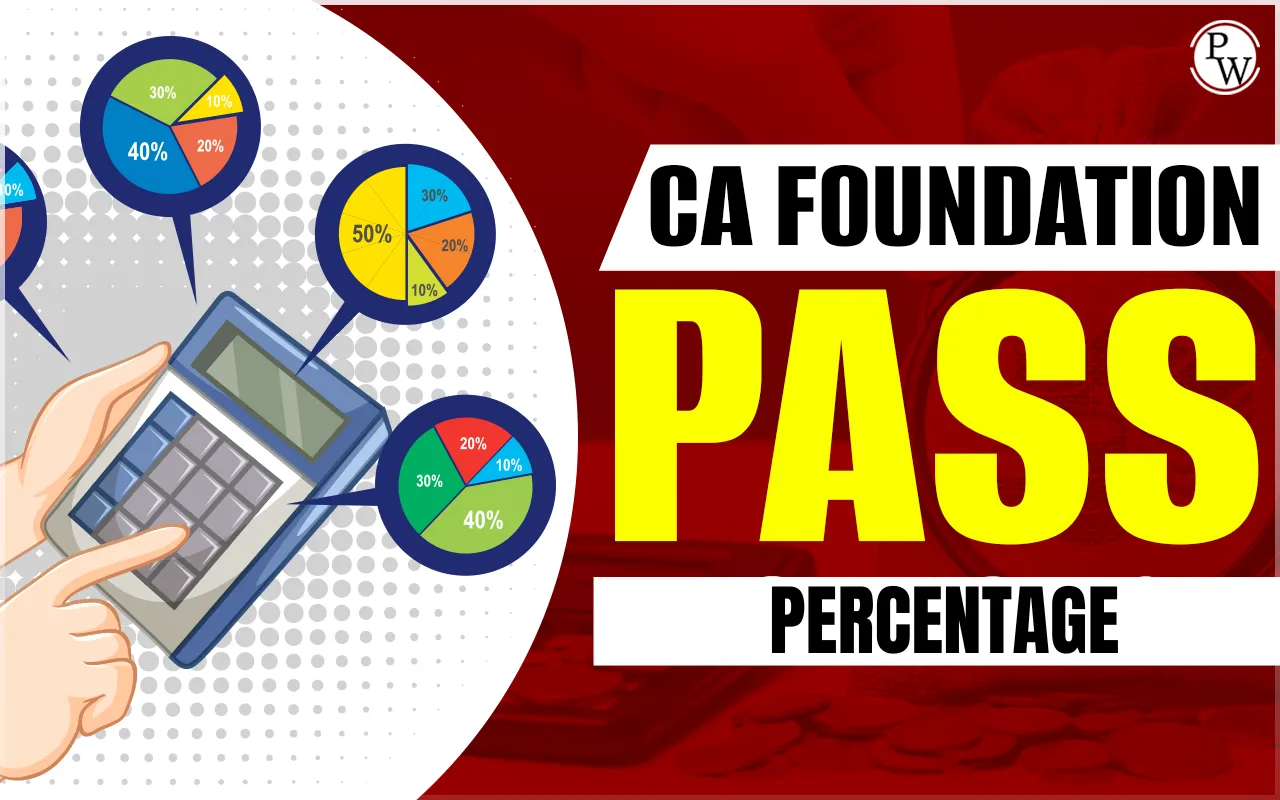
CA Foundation Chapterwise Analysis: The CA Foundation exam is the first step towards a rewarding career in chartered accountancy. Understanding the chapter-wise analysis and weightage for each subject is crucial for effective preparation. In this blog, we'll delve into each subject, dissecting the chapters, their weightage, and key contents.
CA Foundation Chapterwise Analysis
The CA Foundation exam comprises four papers covering diverse subjects crucial for aspiring chartered accountants. Each paper holds specific weightage for various chapters, emphasizing key principles and practices essential for success in the field. From Principles and Practice of Accounting to Business Laws, Quantitative Aptitude, Business Economics, and more, the syllabus offers a comprehensive understanding of accounting, business laws, mathematics, economics, and commercial knowledge. Candidates must prioritize their preparation based on the CA Foundation Chapterwise Analysis and weightage assigned to each chapter to excel in the exam and lay a solid foundation for their future careers in accountancy.Paper 1: Principles and Practice of Accounting
This CA Foundation paper lays the foundation of accounting principles and practices. Here's a breakdown of the chapters:| CA Foundation Chapterwise Analysis for Paper 1: Principles and Practice of Accounting | ||||
| Chapter | Unit | Name of the Topic | Weightage | Contents |
| 1 | Theoretical Framework | |||
| 1 | Meaning and Scope of Accounting | 5% - 10% | Understanding the scope, significance, and limitations of accounting. Introduction to accounting concepts and principles. | |
| 2 | Accounting Concepts, Principles and Conventions | Introduces the concepts of entity, periodicity, matching, cost, dual aspect, materiality, money measurement, accrual, going concern, realization, conservatism and fundamental accounting assumptions. | ||
| 3 | Capital and Revenue Expenditures and Receipts | Explains criteria for identifying capital and revenue expenditure, along with distinction. | ||
| 4 | Contingent Assets and Contingent Liabilities | Explains meaning and distinction of contingent assets, contingent liabilities, and provisions. | ||
| 5 | Accounting Policies | Explains different accounting policies. | ||
| 6 | Accounting as a Measurement Discipline – Valuation Principles, Accounting Estimates | Covers meaning of measurement, historical cost, realizable value, present value, difference between measurement and valuation. | ||
| 7 | Accounting Standards | Explains significance, objectives, benefits, and limitations of accounting standards. | ||
| 8 | Accounting Standards | Covers significance and need of issuance of Indian Accounting Standards. | ||
| 2 | Accounting Process | |||
| 1 | Basic Accounting Procedures – Journal Entries | 30% - 35% | Covers meaning, significance, types of accounts, determination of debits and credits, recording journal entries. | |
| 2 | Ledgers | Covers concept of ledgers and technique of ledger posting. | ||
| 3 | Trial Balance | Discusses preparation of trial balance and its importance. | ||
| 4 | Subsidiary Books | Covers techniques of recording transactions in various subsidiary books. | ||
| 5 | Cash Book | Explains kinds of cash books and concept of petty cash book. | ||
| 6 | Rectification of Errors | Covers types of errors, concept of suspense book. | ||
| 3 | Bank Reconciliation Statement | Covers preparation of bank reconciliation statement, difference between pass book and cash book. | ||
| 4 | Inventories | Covers meaning and methods of inventory valuation such as FIFO, LIFO, Specific Identification Method, weighted average Method, Adjusted Selling Price Methods. | ||
| 5 | Depreciation and Amortisation | Covers meaning and nature of depreciation, methods of depreciation, advantages and disadvantages. | ||
| 6 | Bill of Exchange and Promissory Notes | Covers treatment of bills of exchange, sale of goods on approval or return basis, consignment, average due date, account current. | ||
| 7 | Preparation of Final Accounts of Sole Proprietors | |||
| 1 | Final Accounts of Non-Manufacturing Entities | 20% - 25% | Covers preparation of final accounts for non-manufacturing and manufacturing entities. | |
| Final Accounts of Manufacturing Entities | Covers preparation of manufacturing account, profit and loss account, balance sheet. | |||
| 8 | Financial Statements of Not-for-Profit Organizations | Covers preparation of receipts and payments account, income and expenditure account, balance sheet of not-for-profit organizations. | ||
| 9 | Accounts from Incomplete Records (excluding preparation of accounts based on ratios) | |||
| 10 | Partnership Accounts | |||
| 1 | Introduction to Partnership Accounts | 15% -20% | Covers profit & loss appropriation account, two methods of partners' capital account, rectification of errors, provisions of Indian Partnership Act, 1932 and Limited Liability Partnership Act, 2008. | |
| 2 | Treatment of Goodwill in Partnership Accounts | Covers accounting of goodwill in various scenarios. | ||
| 3 | Admission of a New Partner | Covers accounting treatment in case of admission of new partner, revaluation of assets, recomputation of liabilities, calculation of new profit-sharing ratio. | ||
| 4 | Retirement of a Partner | Covers accounting treatment in case of retirement of partner, computation of gaining ratio, revaluation of assets & liabilities, joint life policy. | ||
| 5 | Death of Partner | Covers accounting treatment in case of death of partner, joint life policy, etc. | ||
| 11 | Company Accounts | |||
| 1 | Introduction to Company Accounts | 15% - 25% | Covers nature and types of companies, salient features, purpose of preparing financial statements. | |
| 2 | Issue, Forfeiture and Re-Issue of Shares | Covers types of shares, accounting treatment in various scenarios related to shares. | ||
| 3 | Issue of Debentures | Covers types of debentures, accounting for issue of debentures, write off discount on debentures, interest on debentures calculation. | ||
Paper 2: Business Laws
This paper covers business laws along with communication skills. Check weightage of chapters and contents in the table below:| CA Foundation Chapterwise Analysis for Paper 2: Business Laws and Business Correspondence and Reporting | |||
| Chapter | Name of the Topic | Weightage | Contents |
| 1 | Indian Regulatory Framework | 0% - 5% | Major Regulatory Bodies such as the Ministry of Finance, Ministry of Corporate Affairs, SEBI, RBI, IBBI, Ministry of Law and Justice, etc. |
| 2 | The Indian Contract Act, 1872 | 20% - 30% | General nature of contract, Consideration, Other essential elements of a valid contract, Performance of contract, Breach of contract, Contingent and Quasi Contract, Contract of Indemnity and Guarantee, Contract of Bailment and Pledge, Contract of Agency. |
| 3 | The Sale of Goods Act, 1930 | 15% - 20% | Formation of the contract of sale, Conditions and Warranties, Transfer of ownership and Delivery of goods, Unpaid seller and his rights. |
| 4 | The Indian Partnership Act, 1932 | General Nature of Partnership, Rights, and Duties of partners, Reconstitution of firms, Registration and Dissolution of a firm. | |
| 5 | The Limited Liability Partnership Act, 2008 | 5% - 10% | Introduction-covering nature and scope, Essential features, Characteristics of LLP, Incorporation and Differences with other forms of organizations. |
| 6 | The Companies Act, 2013 | 15% - 20% | Essential features of company, Corporate veil theory, Classes of companies, Types of share capital, Incorporation of company, Memorandum of Association, Articles of Association, Doctrine of Indoor Management. |
| 7 | The Negotiable Instruments Act, 1881 | 10% - 15% | Meaning of Negotiable Instruments, Characteristics, Classification of Instruments, Different provisions relating to Negotiation, Presentment of Instruments, Rules of Compensation. |
Paper 3: Quantitative Aptitude
This paper evaluates mathematical and logical reasoning skills. Check the weightage of chapters and contents in the table below:| CA Foundation Chapterwise Analysis for Paper 3: Quantitative Aptitude | ||||
|---|---|---|---|---|
| Chapter | Unit | Name of the Topic | Weightage | Contents |
| SECTION A: BUSINESS MATHEMATICS | ||||
| 1 | Ratio and Proportion, Indices, Logarithms | 20% - 30% | Covers computation, comparison, and application in problem-solving. | |
| 2 | Equations | Covers concept of equations and various degrees – linear, simultaneous, quadratic, and cubic equations. | ||
| 3 | Linear Inequalities | Develops inequalities from descriptive problems, graphing, and determining common regions satisfying inequalities. | ||
| 4 | Time Value of Money | 30% - 40% | Covers concepts of simple interest, compound interest, annuity, present value, and future value. | |
| 5 | Permutations and Combinations | 30% - 50% | Differentiates between concepts and computational techniques involved. | |
| 6 | Sequence and Series | Covers computation and applications in commercial problems. | ||
| 7 | Sets, Functions and Relations | Covers concepts, basics, types, and problem-solving. | ||
| 8 | Basic Concepts of Differential and Integral Calculus | Covers basics, computation, techniques, and applications of differentiation and integration. | ||
| SECTION B: LOGICAL REASONING | ||||
| 9 | Number Series, Coding and Decoding and Odd Man Out | 20% - 30% | Covers computation of different kinds of problems. | |
| 10 | Direction Tests | Covers computation of problems based on four directions. | ||
| 11 | Seating Arrangements | Covers computation of problems based on types of seating arrangements. | ||
| 12 | Blood Relations | Covers computation of problems based on blood relations in jumbled form. | ||
| SECTION C: STATISTICS | ||||
| 13 | Statistical Description of Data | 45% - 50% | Provides overview of statistics, application, and presentation of data in different forms. | |
| 14 | Measures of Central Tendency and Dispersion | Covers computational techniques of arithmetic mean, median, mode, geometric mean, harmonic mean, range, quartile deviation, mean deviation, and standard deviation. | ||
| 15 | Probability | 25% - 30% | Covers computation of different problems for financial forecasting. | |
| 16 | Theoretical Distributions | Techniques of developing discrete and continuous probability distributions and its applications. | ||
| 17 | Correlation and Regression | 10% - 15% | Covers concept of bivariate data, types, and measures of correlation and regression analysis. | |
| 18 | Index Numbers | Covers different methods of computing index numbers and its significance. | ||
Paper 4: Business Economics
This paper examines economic principles and business knowledge. Check the CA Foundation weightage of chapters and contents in the table below:| CA Foundation Chapterwise Analysis for Paper 4: Business Economics and Business and Commercial Knowledge | |||
| Chapter | Topic | Weightage | Contents |
| 1 | Introduction to Business Economics | 5% | Meaning, Definition, Nature, Scope of Business Economics, Basic Economic Problems |
| 2 | Theory of Demand and Supply | 10% | Meaning of demand, determinants, types of elasticity |
| 3 | Theory of Production and Cost | Definition, Characteristics, Production Optimization | |
| 4 | Price Determination in Different Markets | 15% | Four Basic Market Types, Principles |
| 5 | Determination of National Income | 15% | a Macro Economic Aggregates and Measurement of National Income b. Determination of National Income: Keynes’ Two Sector Basic Model, Three Sectors and Four Sectors Models |
| 6 | Business Cycles | 5% | Meaning, Phases, Features, Relevance |
| 7 | Public Finance | 10% | a. Fiscal functions: An Overview, Centre and State Finance b Market Failure/Government intervention to correct market failure. |
| 8 | Money Market | a. Concept of Money Demand b. Important theories of Demand for Money c. Concept of Money Supply, Cryptocurrency and other new terminology d. Monetary Policy | |
| 9 | International Trade | 10% | a. Theories of International Trade including theories of intra-industry trade by Krugman. b. Trade Policy – The Instruments of Trade Policy c. Trade Negotiations d. Exchange Rates and its economic effects e. International Capital Movements: Foreign Direct Investment |
| 10 | Indian Economy | 10% | (Before 1950- Chanakya and Nand Vansh, OECD Paper (1950-1991), Basic knowledge 1991 Onwards |
CA Foundation Chapterwise Analysis FAQs
What subjects are covered in the CA Foundation exam?
The CA Foundation exam covers four papers: Principles and Practice of Accounting, Business Laws and Business Correspondence and Reporting, Quantitative Aptitude, and Business Economics and Business and Commercial Knowledge.
How can I prioritize my preparation based on CA Foundation chapter weightage?
Prioritize your preparation by allocating more time to chapters with higher weightage. Focus on understanding key concepts and practicing questions from these chapters extensively.
What are the key chapters in Principles and Practice of Accounting?
Key chapters in Principles and Practice of Accounting include Theoretical Framework, Accounting Process, Accounting for Special Transactions, and Financial Statements of Not-for-Profit Organizations, among others.
What topics are included in Business Laws and Business Correspondence and Reporting?
Topics include The Indian Contract Act, The Sale of Goods Act, The Indian Partnership Act, Business Correspondence, Reporting, Vocabulary, Article Writing, and more.
How important is understanding the weightage of chapters for the CA Foundation exam?
Understanding chapter weightage helps in effective time management during preparation. It allows candidates to focus more on chapters carrying higher weightage, thereby maximizing their chances of scoring well in the exam.
Talk to a counsellorHave doubts? Our support team will be happy to assist you!

Check out these Related Articles
Free Learning Resources
PW Books
Notes (Class 10-12)
PW Study Materials
Notes (Class 6-9)
Ncert Solutions
Govt Exams
Class 6th to 12th Online Courses
Govt Job Exams Courses
UPSC Coaching
Defence Exam Coaching
Gate Exam Coaching
Other Exams
Know about Physics Wallah
Physics Wallah is an Indian edtech platform that provides accessible & comprehensive learning experiences to students from Class 6th to postgraduate level. We also provide extensive NCERT solutions, sample paper, NEET, JEE Mains, BITSAT previous year papers & more such resources to students. Physics Wallah also caters to over 3.5 million registered students and over 78 lakh+ Youtube subscribers with 4.8 rating on its app.
We Stand Out because
We provide students with intensive courses with India’s qualified & experienced faculties & mentors. PW strives to make the learning experience comprehensive and accessible for students of all sections of society. We believe in empowering every single student who couldn't dream of a good career in engineering and medical field earlier.
Our Key Focus Areas
Physics Wallah's main focus is to make the learning experience as economical as possible for all students. With our affordable courses like Lakshya, Udaan and Arjuna and many others, we have been able to provide a platform for lakhs of aspirants. From providing Chemistry, Maths, Physics formula to giving e-books of eminent authors like RD Sharma, RS Aggarwal and Lakhmir Singh, PW focuses on every single student's need for preparation.
What Makes Us Different
Physics Wallah strives to develop a comprehensive pedagogical structure for students, where they get a state-of-the-art learning experience with study material and resources. Apart from catering students preparing for JEE Mains and NEET, PW also provides study material for each state board like Uttar Pradesh, Bihar, and others
Copyright © 2025 Physicswallah Limited All rights reserved.
Get App









